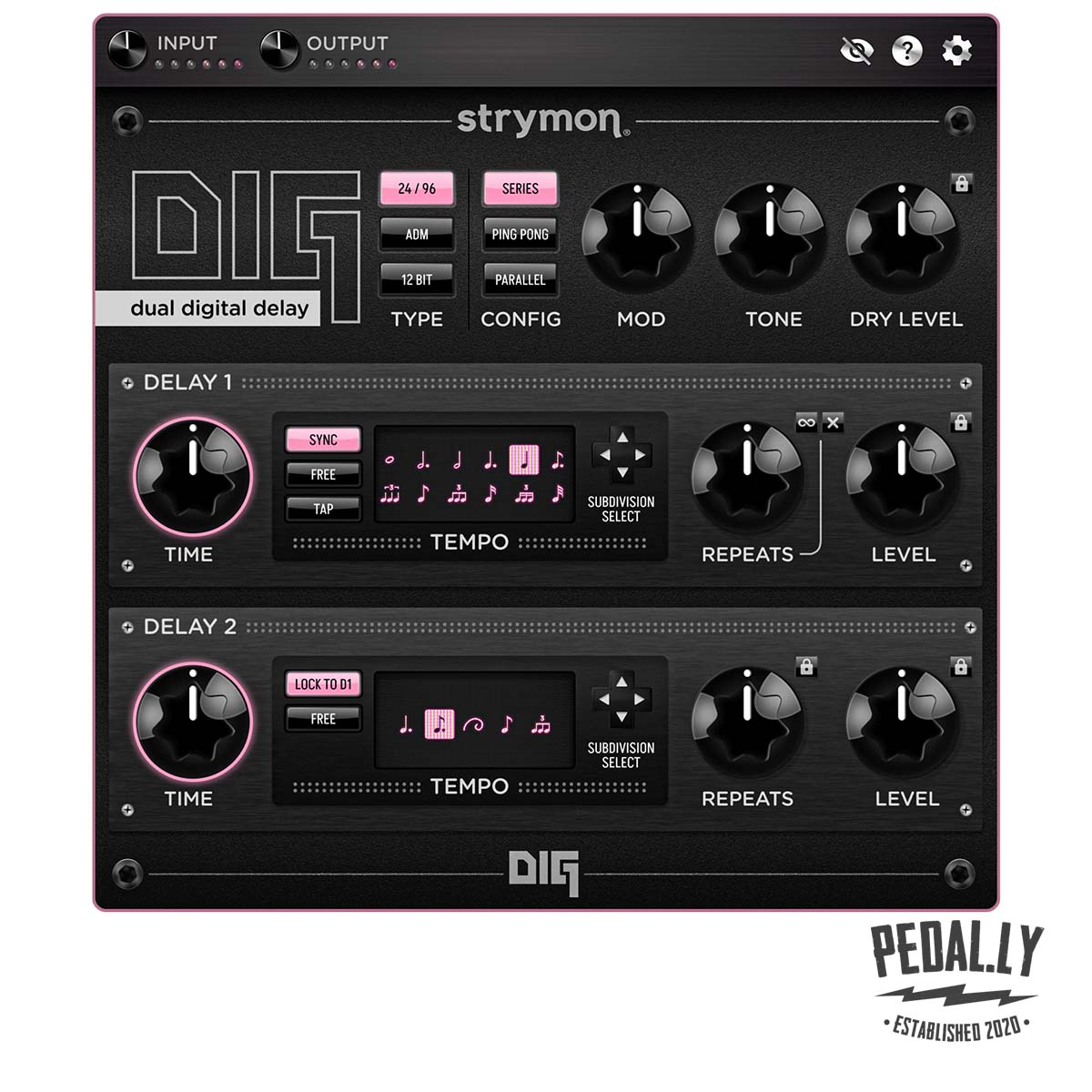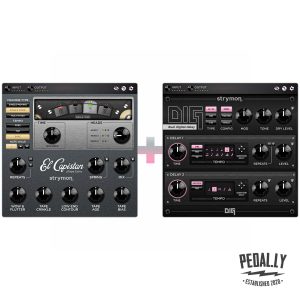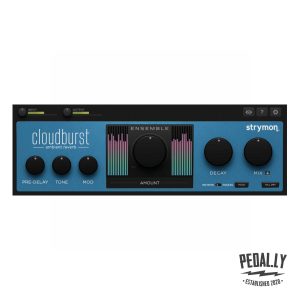Description
Rack To The Future
Rack-mount digital delays of the 80s ushered in a new era of audio effects, where the innovative electronic designs generated clean delays that sounded altogether fresh and new, but with special and intriguing sonic characteristics.
Decades later, these sounds remain as distinctive and inspiring as ever.
Delay Doppelgänger
The DIG plugin unearths the true soul of digital delay and doubles it — two simultaneous, integrated delays with captivating rack delay voicings from the 1980s and today.
Instantly create intricate synchronized echo patterns, as well as hypnotic and atmospheric repeats that blur the line between delay and reverb.
Each of DIG’s three digital delay voicings has its own distinctively inspiring personality: the early 80s adaptive delta modulation mode, the mid-80s 12-bit pulse code modulation mode, and the modern high-resolution 24/96 mode.
Voices Of Digital
Don’t all digital delays sound the same? What gives a digital delay its own unique personality?
Digital conversion technologies in the late 70s were advancing rapidly, and clever electronics designers were on a quest to squeeze out the best possible performance specs with fidelity not previously available from tape or analog circuits. Their imaginative solutions to the limitations of the conversion process resulted in delays that possessed some unintended and unique characteristics. DIG beautifully reveals their individual personalities.
ADM
A one bit, high sample rate conversion technique that evolved from telecommunications voice coding. The conversion and supporting signal conditioning, limiting, and pre-emphasis/deemphasis create a percussive wide-band delay that adds more character as input dynamics increase.
12-Bit
A 12-bit, 32kHz PCM conversion made possible by monolithic IC chips developed in the late ’70s. Pre-emphasis/de-emphasis and companding combine with the converters to produce a warm delay with a dimensional sense.
24/96
A clean, high-resolution, high-bandwidth delay with a hint of dynamics that allow the delay to sit nicely with the analog dry signal. 24-bit resolution and a 96kHz sampling rate ensure uncolored, artifact-free repeats.
Two-For-One Special
At the heart of DIG are two simultaneous and integrated delay machines. Delay 1 is the leader delay — its free-running delay time allows you to easily dial in delays from 20ms to 1.6s with the Time knob or Tap Tempo switch, or sync to your project tempo with selectable time division. Longer delay times lend themselves to more ambient soundscapes while doubling and slapback effects can be achieved at short delay times.
Delay 2 follows as the companion delay. A dedicated subdivision control determines the ratio between the two delays with one of five rhythmic subdivisions: triplet, eighth note, dotted eighth note, dotted quarter note, and the golden ratio. Don’t want your delays to be synchronized? DIG’s Free mode button disables time sync and subdivisions between Delay 1 and Delay 2, giving the Time 2 knob a full delay range from 7ms to 2.4s. This lets you use both of DIG’s delays as truly independent, standalone delay machines.
Routing Options
Series, Ping Pong, Parallel — Set up your two delays in one of three configurations.
Series feeds Delay 2 into Delay 1. With Ping Pong, each delay acts as a ping pong delay, interacting together when both Level knobs are turned up for captivating stereo back and forth rhythms. Parallel will orient your delay lines so that they remain independent — Delay 1 in the left channel and Delay 2 in the right channel.
Tune Your Tone
The Tone control adjusts the feedback filter response. Turn Tone to the left to reduce high frequencies for dark, washed out repeats, set it to noon for a neutral and flat response, or go past noon for increasingly sparkly, shiny delays with reduced low frequencies.
Add Some Movement
Want to add extra character to your repeats? Turn up the Modulation knob for anything from subtle movement to deep, lush and thick modulation. Or turn the knob fully counterclockwise for completely unmodulated echoes.
Sound Design Features
- Two simultaneous, integrated delays, with unique digital rack delay voicings
- Each of the integrated delays provides true stereo for a total of four interactive delay lines
- Adjustable Modulation, Tone, and Dry Level for control over repeats
- Adjustable Time, Level and Repeats for each Delay engine
- One modern and two classic digital delay voicings: 24/96, ADM (Adaptive Delta Modulation), and 12 bit
- Up to twelve Delay 1 subdivisions: Whole, Dotted Half, Half, Dotted Quarter, Quarter (the default), Dotted Eighth, Eighth Triplet, Eighth, Sixteenth Triplet, Sixteenth, Thirty-second Triplet, and Thirty-second note
- Delay 1 Tempo Modes for project tempo Sync or TAP modes with subdivision options or Free mode
- Delay 2 can be locked to Delay 1’s Time/Tempo with its own optional subdivisions: Dotted Quarter, Dotted Eighth, Golden Ratio, Eighth, and Eighth Triplet
- Repeats Lock switch to provide independent or locked number of repeats for Delay 1 & 2
- Selectable Free Mode for Delay 1 and Delay 2 disables subdivisions and synchronization
- Press and hold Circular Repeats effect
- Delay 1 offers a 20ms – 1.6s delay range. Delay 2 offers 7ms to 2.4s delay range (Ranges may differ depending on Sync or TAP tempo and subdivision selections)
Plugin Technical Details
- AU (Mac) and AAX & VST3 (Mac and Windows) plugin formats for support with all major DAW host applications
- DAW host support for mono, mono-stereo, and stereo plugin instances and standard sample rates from 44.1 kHz to 192 kHz, at 16-bit or 24-bit resolution
- Support for DAW host automation of plugin parameters
- 32-bit floating point processing
Strymon DIG Demo Video
Related products
-
Strymon Echo Bundle: El Capistan & DIG Plugin Bundle
$99.00 Add to cart -
Strymon El Capistan Tape Echo Plugin
$79.00 Add to cart -
Strymon Cloudburst Ambient Reverb Plugin Software
$79.00 Add to cart -
Synchro Arts RePitch Standard
$149.00 Add to cart -
Strymon Zuma R300 Power Supply
$229.00 Add to cart -
Strymon Ojai Compact High Current DC Pedal Power Supply
$169.00 Add to cart







